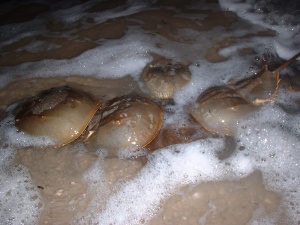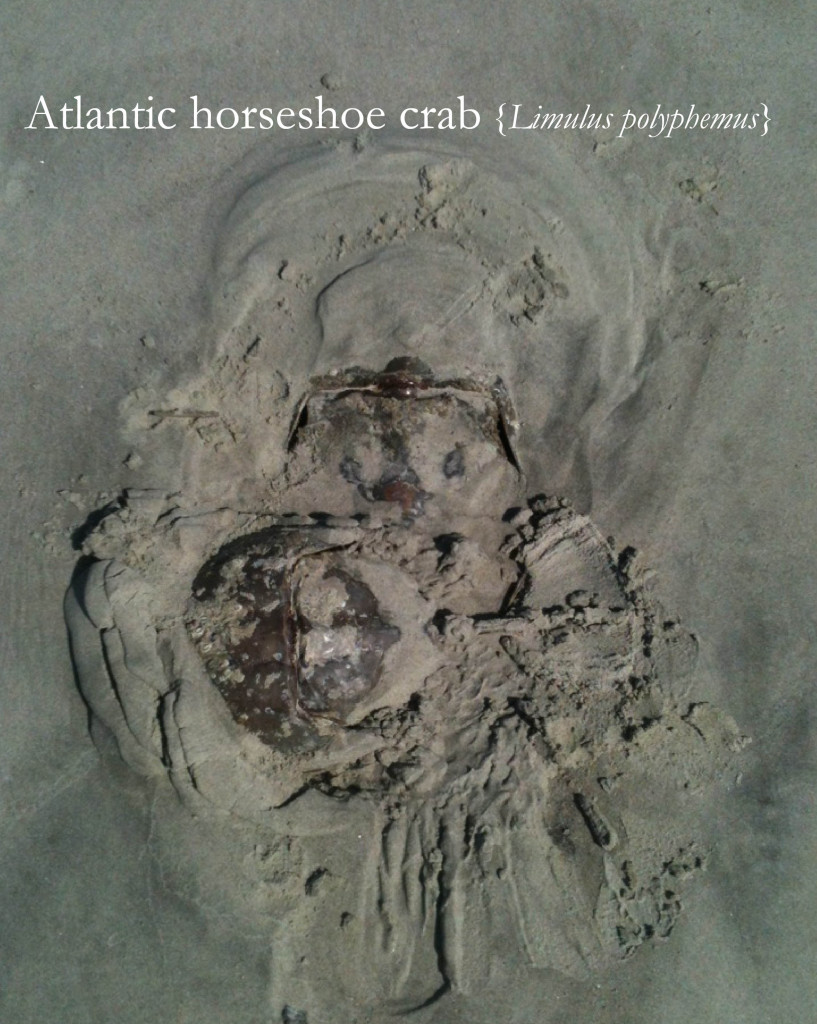You may have heard about the phenomena of horseshoe crab spawning … but, do you really know what’s going on? It’s when hundreds of thousands of these ancient arthropods (dating back 400 million years!) make the journey to low-energy sandy beaches along the Atlantic coast, predominately along the Mid-Atlantic region (highest concentration found along the Delaware Bay), around the time of the full and new moons of May and early June to spawn. Here’s the distilled version of the horseshoe crab spawning saga complete with the words you need to know (i.e., “pedipalps” and “satellite” male) if you want to be considered a horseshoe crab expert. Who doesn’t?
- Journeying from intertidal and deeper waters, male horseshoe crabs arrive near the beach waiting for females.
- As the females come closer to shore, males attach to the female’s abdomen. The extra claw, or “pedipalps”, is what the male uses to attach itself to the females.
- Not just the one … but, many “satellite” males follow the conjoined pair.
- The females dig a depression about 5 to 30 centimeters deep in the upper part of the beach and deposit the clusters of eggs.
- External fertilization occurs – Allows for a little extra competition from the “satellite” males!
- Repeat steps 1 through 5 multiple times per season, laying 3,650 to 4,000 eggs in a cluster (usually an estimated 88,000 eggs annually!).
- In 2 to 4 weeks after fertilization, planktonic larvae hatch from the eggs. Some slow moving larvae may even winter within the nests and hatch out the following spring.
- After hatching, larvae swim for about six days before they relax in shallow waters to molt into their first juvenile stage in approximately 20 days.
- For the first two to three years of life horseshoe crabs molt many times over, growing a quarter of their size each time. Once sexual maturity is reached they slowdown their molting to once per year.
- Horseshoe crabs mature around 10 years of age (or 17 molts) and are known to live to be approximately 20 years of age.
For more information on horseshoe crabs and “99 reasons I am in Limulus Love” check out my horseshoe crab page here.













What people are saying …